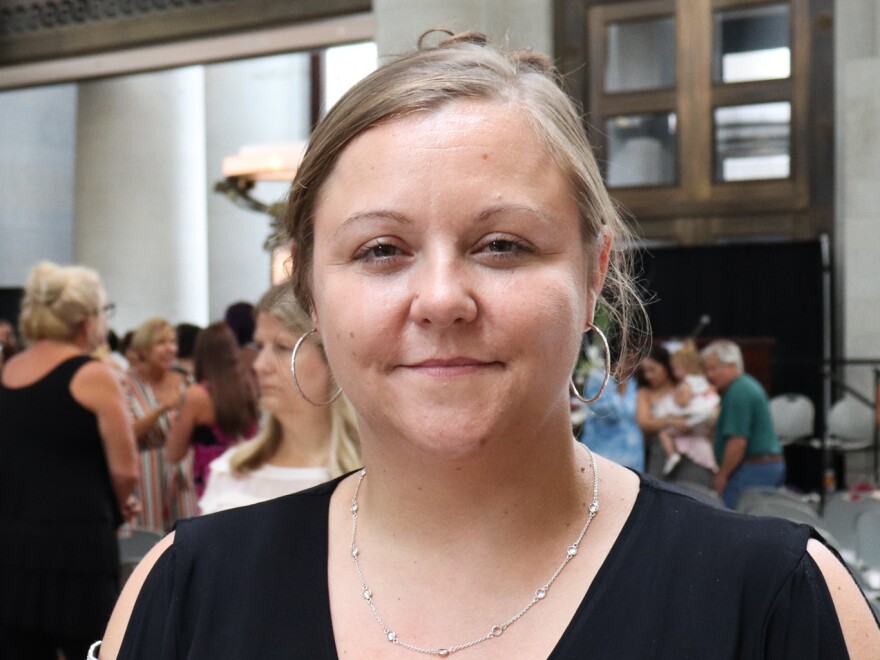A diversion program for victims of human trafficking is spreading to cities around the country. The model has roots in Columbus, Ohio, where a judge decided to direct women toward rehabilitation instead of jail.
Ten years ago, Judge Paul Herbert was sitting in a courtroom when he noticed a trend. He was seeing lots of women who were abused and forced into sex work, but they were being treated like criminals.
"The sheriff brings the next defendant out on the wall chained up," Herbert says, "and it's a woman and she's all beat up, she's looking exactly like one of these victims of domestic violence except she's in handcuffs and a jail suit. I look down at the file and it says prostitute."
Herbert realized the law didn't recognize these women as victims of human trafficking. So he pitched the idea of a courtroom dedicated to recovery, not punishment. It's called CATCH Court, which stands for Changing Actions To Change Habits.
"We didn't have the vocabulary that we do, even the vocabulary, let alone the way society looked at these women," Herbert says. "So it was pretty much, we were kind of a laughingstock."
At the start, CATCH was one of only a few such programs in the country.
There are now seven of these specialized courts in Ohio alone. There are similar programs in Texas, Illinois, Tennessee and Louisiana, and Herbert has helped cities get the courts up and running.

Here's how it works: The program takes care of housing and food — things the women would normally need from their trafficker. Participants get treatment for trauma and addiction, and they are eligible to get their records expunged.
In exchange, they're subject to drug testing and must show up in court every week for two years.
While it costs $200,000 a year to run CATCH Court, Herbert says that's a bargain.
"If you want to do nothing, you're going to keep spending $5.4 million a year to arrest and jail these women and have no improvement in the circumstance," Herbert says.
But this program is intense. Less than 1 in 4 of the women enrolled make it to graduation.
"We had a person who left our house and she was a CATCH Court dropout. I can tell you I've had about maybe 15 this year," says Esther Flores. She runs a safe house for women in sex work and says CATCH is great for those who graduate but doesn't do enough for the women who don't.
Some women drop out because they get jobs and don't need the assistance, but Flores says she has seen others end up back on the street.
"I became addicted to drugs and then the trafficker found me," says Vanessa Perkins. She's one of CATCH's first successful graduates.
Perkins was sexually abused as a young girl and started drinking and doing drugs when she was only 12.
"He preyed on my vulnerabilities on purpose, knew what he was doing," she says. "From drug addiction, to love, to family, to loyalty. He preyed on all of that stuff I was missing."

In a twist Perkins says she never could have imagined, years after completing the program, Herbert asked her to be the bailiff in his court — the very court that helped her recover. Now she helps other women who are going through what she did years ago.
"They're like, if you can do it, I can do it. Especially if I happened to be out there with them," she says. "Cause there's people that come in that we was on the streets together."
CATCH has found success keeping women out of the system, regardless of if they cross the graduation stage — the recidivism rate for women in prostitution nationwide is 80%. That number drops by half for women enrolled in CATCH for any amount of time, and even further to 20% for the women who make it to graduation.
Copyright 2021 WOSU 89.7 NPR News. To see more, visit WOSU 89.7 NPR News. 9(MDIwMjIxMDA0MDE0Mzk4NDIzNjA0OGQ5Yg001))


